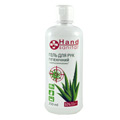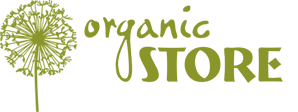 Since the world was hit by the COVID-19 pandemic, hand hygiene has become more important than ever. The demand for hand sanitisers has increased manifold because now almost everyone uses them, including children. But are hand sanitisers really safe for children? Let’s find out how to choose a safe hand sanitiser for your kids.
Since the world was hit by the COVID-19 pandemic, hand hygiene has become more important than ever. The demand for hand sanitisers has increased manifold because now almost everyone uses them, including children. But are hand sanitisers really safe for children? Let’s find out how to choose a safe hand sanitiser for your kids.
Although alcohol has been used as an antiseptic for centuries, hand sanitisers were first introduced in the 1960s. For several decades, they were primarily used in hospitals, healthcare facilities, and other medical settings. Hand sanitisers for everyday use were popularised in the 1990s, and the second wave of their popularity came in 2020 because of the novel coronavirus. Today, people use hand sanitisers to protect themselves and their children, but are these products safe for kids?
First of all, you should remember that washing your hands with soap is the best way to protect yourself from viruses and bacteria. You should use hand sanitiser only when you don’t have immediate access to soap and running water. Your task as an adult is to lead children by example and help them to understand when to wash their hands and when to use hand sanitiser.
There are several reasons why hand washing with soap and water is generally preferred to using hand sanitiser. First, hand sanitiser is less effective against certain kinds of germs, such as norovirus. The good thing is that, contrary to a common misconception, it doesn’t eliminate beneficial microbes that are naturally present on your hands. It does kill them, but the body quickly replenishes the skin’s beneficial flora.
The second drawback of hand sanitisers is that most of them are alcohol-based, containing 60% to 95% alcohol (any hand sanitiser with an alcohol content less than 60% is ineffective). Alcohol may strip the skin of moisture and oil, drying it out and disrupting its natural barrier function. This is especially true for children, whose skin produces less sebum.
Therefore, the most important rule of thumb when letting your kid use hand sanitiser is to use it strictly as needed. For example, you should use it immediately after contact with potentially contaminated surfaces in public areas, such as handrails in public transport, door handles in public places, money, etc. In addition, it may be appropriate to let your kid use hand sanitiser after visiting a playground or a children’s play area in a mall. Of course, your kid still needs to wash his or her hands when you get home.
For hand sanitiser to be effective, you need to make sure that your kid rubs it into his or her hands for at least 20 seconds, paying special attention to the backs of the hands and fingers, spaces between the fingers, the nails, etc. In other words, every inch of your kid’s hands should be exposed to sanitiser.
Keep in mind that if your kid’s hands are very dirty, using hand sanitiser is pointless until the skin is clean. So if you don’t have access to water and soap right now, you should use wet wipes to clean your kid’s hands first, and only then let him or her use hand sanitiser.
How to choose the best hand sanitiser for your child? The product you choose should be effective and safe at the same time. As for effectiveness, we have already mentioned above that an effective hand sanitiser should contain at least 60% of alcohol (typically ethanol, isopropyl alcohol or their combination). If the product contains less alcohol, it won’t be able to break down the membranes of germ cells and kill germs.
As far as safety is concerned, you should carefully read the ingredient lists of hand sanitisers that you consider buying for your kid to make sure that they don’t contain synthetic dyes, fragrances, and other potential allergens. It will be great if your kid’s hand sanitiser contains skin softening and moisturising ingredients, such as glycerine, aloe vera gel, chamomile extract, bisabolol, allantoin, panthenol, etc. The form of sanitiser (liquid, gel or foam) doesn’t make any difference, choose whatever your kid is most comfortable with.
Some brands produce special “children’s hand sanitisers” in bright bottles. Generally, they contain the same ingredients as regular hand sanitisers “for adults”, but they are more expensive because, well, marketing! Of course, you can buy hand sanitiser in a cute bottle for your child if you can afford it, but keep in mind that you still should pay attention to the ingredients.
If you’re looking for a safe and effective hand sanitiser that will be good for your child and will help you to save the family budget, check out hand sanitisers by Hand Sanitar, a Ukrainian brand owned and produced by Alliance of Beauty. Hand Sanitar offers antiseptic gels and sprays formulated with ethanol and natural skin softening and moisturising ingredients, which make them safe even for kids. Hand Sanitar antiseptics contain no less than 60% of ethanol and are infused with aloe extract, allantoin and panthenol to protect your kid’s skin from irritation and dehydration.
Hand Sanitisers in Our Store
Hand Sanitar Hygienic Hand Gel with Antiseptics, 250 ml |
